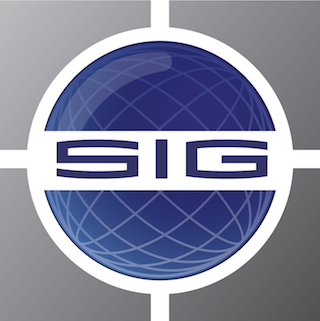The US foreign-policy community has been gathering itself around the goal of winning the AI race against China. The problem is that defining “winning” is not at all easy. If winning consists of US companies, in cooperation with the US government, enjoying a monopoly on the best AI technology for some extended period — which does seem to be what is expected — SIG’s view is that winning is nearly impossible. The only way the US could come close is by sharing technology within some type of alliance. But that would entail non-American companies within the alliance having revenues and profits of their own. The US and US companies cannot “win” this alone.
As SIGnal has emphasized before, digital technology has been taking the world’s defense sectors by surprise for some 30 years. Whether it is low-earth-orbit satellite swarms, drones or navigational improvements, technology developed for one use becomes a military must-have for security uses. Proliferation is built into such a process. Military hardware needs software; software lends itself to proliferation, theft, imitation, and improvement. Artificial-intelligence software is no different.
Containment of American AI within US boundaries goes against the nature of the 21st-century technology industry. Most innovation comes from the private sector, whose ability to maximize profit and minimize costs depends on a global marketplace for products and labor. The defense sector is not the private sector but a curious public-private blend. American defense companies do sell a lot to overseas customers, but the customer whose needs shape the greater part of production is the US government. Proliferation of American defense contractors’ products, including software and data, is carefully regulated. Workers need to get government clearances. Contracts have to conform to official bureaucratic standards. There is plenty of red tape. The payoff for defense companies has been the security of long-term contracts and a relatively high level of protection from competition — notably from foreign competition. The main downside is that profits from such quasi-public business, in the absence of corruption and favoritism, are limited by the obligation of Congress to ensure that government is not over-spending. Innovation within the defense sector thus seems to come up against natural limits. That is not the case in the private sector, which is why so much military innovation comes from outside the defense sector and commonly occurs for reasons that have nothing to do with defense.
This is abundantly true of AI innovation. If the US government wanted to make AI innovation henceforth a government-controlled process, it would amount to turning AI companies into defense companies — which would remove much of their incentive for innovation, defeating the purpose of the exercise. It would not be much of a victory in the race for AI dominance.
By contrast, operating with trusted partner countries would have some of the advantages of globalization — multiple labor and consumer markets to choose from — while preserving the goal of excluding China and other antagonists. Of course, forming some sort of digital alliance structure has been a US goal since the middle of the first Trump administration. Results have been mixed. There has been a contradiction at their core: The US wants partners but insists on being the dominant one. That kind of dominance cannot work in the case of private-sector-led technology innovation.
Fortunately US tech companies, although in their own ways just as hungry for dominance as the US government, have become accustomed in the last decade to competing in markets with foreign companies and not always winning. They have invested huge amounts in overseas markets: to pay suppliers, establish their own production, or attract customers but also to take advantage of the huge and growing innovation ecology that exists outside the United States. And foreign governments and private competitors have gotten used to them as well. The degree to which US tech companies can be profitably active in non-American markets without dominating them is an example of a type of loose alliance. The struggle with China is an important shaping factor but it does not distort everything it touches.
Learning from the success of this private-sector-led approach to the US-China tech contest could lead to a public-sector variant that could help control AI proliferation while accepting that winning the AI race with China, in the winner-take-all sense, cannot be done. A different type of victory might be possible though. After all, when the US, following the Soviets’ shocking Sputnik launch in 1957, went all out to win “the space race” against the USSR, it did not so much prevail as demonstrate its ability to continue to innovate at a pace the Soviet Union could not match. The result, in 1975, was American and Soviet astronauts living together in the International Space Station (as Russians and Americans still do) and the growth of an international scientific subculture that played an important role in bringing the Soviet experiment in oppressive governance to a close.
